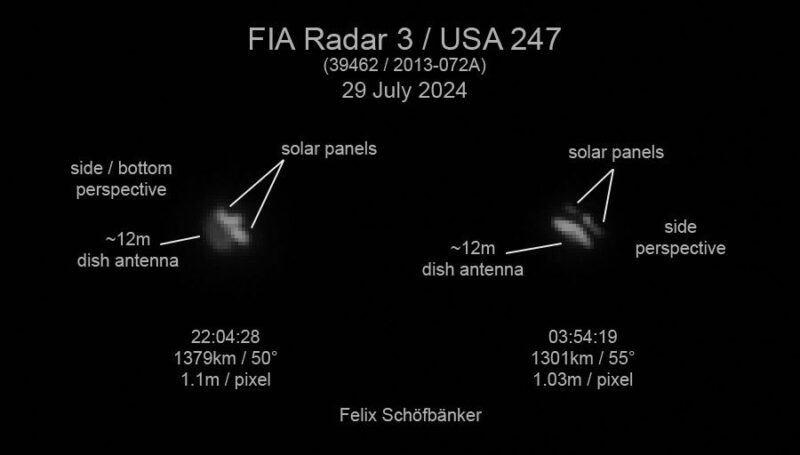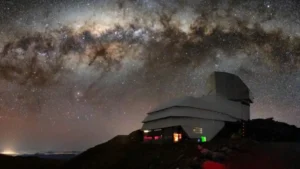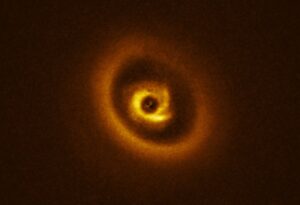Very little information is available about the various spy satellites orbiting our planet. But some of them have been caught on camera. Amateur astronomer Felix Schofbanker spent months tracking them down.
Governments use various classified spacecraft to intercept radio transmissions, detect missiles, scan Earth, and look in detail at areas of interest to the owners. The mystery of spy satellites attracts people like Shofbanker, who try to catch photos of them.
“My images have revealed a few things that either were not known or only speculated before,” Schofbanker told Space.
The Austrian believes he has captured images of a fleet of US-government spy satellites known as Future Imagery Architecture (FIA) Radars, as well as some KH-11 satellites.

Photo: Felix Schofbanker
Undeclared capabilities
The FIA Radar, often known as Topaz, is a series of five satellites. Made by Boeing, they take high-definition imagery of Earth and can be used by operators to track targets or keep an eye on foreign powers. The U.S. launched the first Topaz satellite in 2010, the last in 2018. They have never declared the full capabilities of the group of satellites, but we know that Topaz 1 contains a nuclear power system, an altitude control system, and a cylindrical monocoque aluminum structure.
Schofbank could not work out which of the five satellites he saw.
“From my images, I conclude that these satellites have a parabolic mesh antenna, that is roughly 12m in diameter, and two solar panels with a roughly 10m wingspan. There is another bright object between the solar panels that I interpret as an up-and-downlink antenna, though this also might be something else,” Schofbank said.
Like Hubble, but facing Earth
The KH-11 satellites convert light into electronic signals and can identify objects on Earth that are just three inches long.
“They are somewhat similar to the Hubble Space Telescope, but optimized to look down to Earth, instead of studying space,” Schofbanker said.

KH-11 satellites. Photo: Felix Schofbanker
The first KH-11 launched in 1976. At the time they were a breakthrough, allowing for intelligence services to use satellite captured imagery in real time. Before this, there was a delay of days or weeks.
Though the original KH-11 is no longer in orbit, four others remain.
“They launched the oldest one currently up there in 2005. It is a third-generation KH-11 with the name USA 186. The next two are called USA 224 and USA 245. These are the fourth generation [models] from 2011 and 2013. The newest one is a fifth-generation spacecraft from 2021 and is called USA 314,” Schofbanker explained.
The U.S. has had spy satellites since 1960. At the time they were primarily used to photograph the Soviet Union and China. They were successful in capturing imagery of Soviet medium, intermediate, and intercontinental ballistic missile launching facilities. Now the U.S. has launched over 200 spy-satellites into space.






